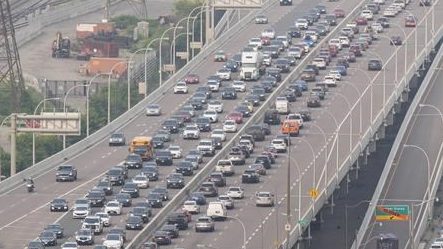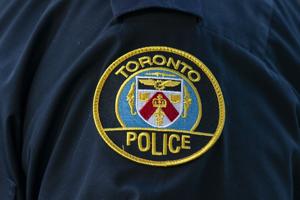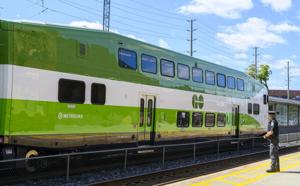Top Stories
Toronto Gears Up for Major Traffic Surge as Offices Reopen

URGENT UPDATE: As employees flood back to offices, Toronto braces for a significant surge in traffic congestion. Mayor Olivia Chow has just announced critical adjustments to the city’s public transit system, aiming to alleviate mounting commuter pressures.
In a bid to enhance travel efficiency, the Toronto Transit Commission (TTC) will increase service on Line 2 (Bloor-Danforth) to pre-pandemic levels. This includes adding six additional trains during peak hours, reducing wait times from every three and a half minutes to just two minutes and 20 seconds. The TTC is also ramping up service on bus routes 72 (Pape), 73 (Royal York), and 94 (Wellesley).
Additionally, Metrolinx has confirmed it will boost rush-hour trips on the Lakeshore East, Lakeshore West, Barrie, and Stouffville GO lines. However, experts warn that the increased office attendance could severely strain the already creaking transit system.
University of Toronto professor Matti Siemiatycki stated, “The transit system is creaking. It’s hard to get around this system on public transit.” He highlighted the importance of reliable service to encourage commuters to choose public transit over personal vehicles.
Recent data from Statistics Canada reveals that Toronto commuters have the longest average commute times in Canada, with travel times nearing 35 minutes, a rise of nearly two minutes from last year. In contrast, the national average is just under 27 minutes. Siemiatycki cautioned, “If we have a car-based recovery, it’s going to be a nightmare. Our roads are going to be packed. There’s going to be gridlock everywhere.”
To address the anticipated traffic surge, the city plans to deploy 100 traffic agents, implement better-planned construction road closures, and enhance traffic flow at intersections. However, challenges loom as a major construction project will close the southbound off-ramp from the Don Valley Parkway to Richmond Street starting Wednesday, with closures expected to last until spring 2024.
Siemiatycki emphasizes that efficient management of these projects is crucial. “Enforcement is critical to make sure that the roads that we do have are being used the most efficiently,” he stated.
The city’s recovery strategy also calls for a collective effort from businesses, encouraging flexible employee hours and promoting carpooling to alleviate pressure on the transit network.
The TTC indicates these changes are just the beginning, with further service modifications anticipated in the coming months. As Toronto prepares for this major traffic influx, the focus remains on enhancing public transit reliability and minimizing congestion.
Stay tuned for more updates on this developing situation as the city navigates these challenges.
-

 Politics4 weeks ago
Politics4 weeks agoSecwepemc First Nation Seeks Aboriginal Title Over Kamloops Area
-

 World5 months ago
World5 months agoScientists Unearth Ancient Antarctic Ice to Unlock Climate Secrets
-

 Entertainment5 months ago
Entertainment5 months agoTrump and McCormick to Announce $70 Billion Energy Investments
-

 Science5 months ago
Science5 months agoFour Astronauts Return to Earth After International Space Station Mission
-

 Lifestyle5 months ago
Lifestyle5 months agoTransLink Launches Food Truck Program to Boost Revenue in Vancouver
-

 Technology3 months ago
Technology3 months agoApple Notes Enhances Functionality with Markdown Support in macOS 26
-

 Lifestyle3 months ago
Lifestyle3 months agoManitoba’s Burger Champion Shines Again Amid Dining Innovations
-

 Top Stories2 months ago
Top Stories2 months agoUrgent Update: Fatal Crash on Highway 99 Claims Life of Pitt Meadows Man
-

 Politics4 months ago
Politics4 months agoUkrainian Tennis Star Elina Svitolina Faces Death Threats Online
-

 Sports5 months ago
Sports5 months agoSearch Underway for Missing Hunter Amid Hokkaido Bear Emergency
-

 Politics5 months ago
Politics5 months agoCarney Engages First Nations Leaders at Development Law Summit
-

 Technology5 months ago
Technology5 months agoFrosthaven Launches Early Access on July 31, 2025




















